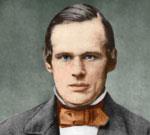40 years ago in Chemistry in Britain
40 years ago in Chemistry in Britain

With the introduction of SI units in science, the departure of the ?ngstr?m unit is probably the most mourned loss amongst chemists. There have already been protests from the Inter-Union Commission on Spectroscopy that the ? and cm-1 should be retained since both are metric and of a very convenient size. Furthermore the commission states that these units have been used from the beginning of spectroscopy and all the immense literature in the field employs these units.
Spectroscopy does not, of course, represent the whole of chemistry - but, as the spectroscopists have said, the ?ngstr?m is a very convenient length. Should it be condemned to oblivion or should it be retained? The only truly acceptable answer must be the one that comes from the body politic of chemistry. Chemistry in Britain reader, do you want the ?ngstr?m or not?
From a Talking Point article in Chemistry in Britain (October 1968)
Ed. This article resulted in a spate of letters to Chemistry in Britain . The crystallographer Dame Kathleen Lonsdale, for example, argued strongly in favour of the retention of the ?ngstr?m. In reply J Lee from UMIST at Manchester argued strongly that the ?ngstr?m should be abolished as part of a coherent introduction of SI units.
The ?ngstr?m did not die a death back in the Sixties, but is still used, alongside the nanometer by spectroscopists and crystallographers and other chemists. Someone has even coined the term ’angstrotechnology’, though this has never caught on to the same extent as nanotechnology.












No comments yet